Europe
Asia Pacific
North America
South America
Middle East
South Africa
Executive Summary
On 8 January, the International Longshoremen Association (ILA) and the United States Maritime Alliance, Ltd. (USMX) announced a tentative agreement on a new, six-year master contract, thereby ending the threat of a U.S. Gulf and East Coast strike.
President Trump was sworn in on 20 January. It is being reported that he will stop short of immediately imposing tariffs on imported products but will issue an executive order directing federal agencies to begin studying a broad list of trade issues that could ultimately result in taxes on goods from China, Canada, Mexico and other countries in the coming months.
With the Gaza ceasefire in effect as of 19 January, the Houthi say they will stop military action against international commercial vessels transiting the Red Sea, with the exception Israeli-owned or flagged ships. It will take time to see how quickly carrier change their voyage routing to being transiting the Suez once again.
The Fuel EU Maritime is the latest EU regulation aimed at the maritime sector, which came into force on the 1 January 2025. It is part of the European Union’s broader “Fit for 55” package of legislation. Container carriers have announced surcharges in line with this new regulation which comes on top of the EU ETS in place since 2024.
The rerouting of global trade from China to other Asian ports is leading shipowners to move on from the era of ordering ever-larger vessels and switch to smaller crafts instead. Also, the threat of environmental regulations and trade disruptions, such as last year’s attacks on ships in the Red Sea, have also hit demand for the bulkiest carriers.
Asia is currently on Chinese New Year Holidays, which causes a slowdown in operations and supply chains throughout Asia. More findings on this year CNY are summarized in the below Asian Market Summary as well as our related news article: https://www.bertling.com/news-pool/holiday/chinese-new-year-2025/. We wish all our employees, clients and partners in Asia a Happy Chinese New Year 2025!
Energy Price - January 2025
OPEC forecasted on 15 January that the world oil demand in 2026 will rise at a similar rate. This year, while reducing its figure for 2024 for a sixth time, following economic weakness in China, the world's biggest importer of oil. The 2026 forecast is in line with the Organization of the Petroleum Exporting Countries' view oil use will rise for the next two decades, in contrast to the West’s International Energy Agency that predicts it will peak this decade as the world shifts to cleaner energy.
Key Trends - Europe
- The ILA/USMX tentative agreement on a new six-year master contract ended the threat of a US Gulf/East Coast Strike, ensuring continued operations at major ports and safeguarding the stability of supply chains that handle nearly half of U.S. imports.
- The Network of the Future that will go live on 1 February, with the goal to deliver a well-connected ocean network that aims to provide unmatched and industry-leading reliability above 90 percent for services under the Gemini scope of trades.
- The European Commission has imposed definitive anti-dumping duties on mobile access equipment (MAE) and titanium dioxide (TiO2) imports from China.
- The EU and 4 Mercosur countries (Argentina, Brazil, Paraguay and Uruguay) finalised negotiations for a groundbreaking EU-Mercosur partnership agreement. When the free trade agreement comes into effect, traders of cars, machinery, ICT equipment, textiles, wine, etc. will benefit from the removal of tariffs.
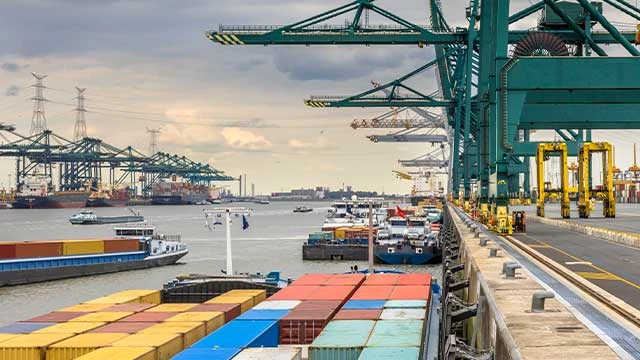
Main Reasons for Bottlenecks
- Seasonal dense fog, strong winds, and snowfall sometimes impact operations and causing stoppages at the terminals in various European ports.
Impact on Freight Rates
- Spot rates from the Far East to Europe dropped at the start of the year, after six weeks of increases at the end of 2024. Since 31 December, the average spot rate from the Far East to North Europe has fallen by 16.9% to USD 4,175 per FEU on 22 January, and down 7.2% to USD 5,400 into the Mediterranean.
- Between Far East to North Europe, carriers have announced the blanking of 317,000 TEU worth of capacity in February.
Outlook
- Capacity from the Far East to North Europe will fall 30%.
- We don't expect long term rates to fall just yet.
Key Trends - Asia Pacific
- Moving into 2025, we can expect the Asian shipping industry to ride on a wave of market adjustments, navigating concerns of overcapacity and adapting to evolving trade dynamics. Issues with world events experienced in 2024 still exist and the norm is expecting to stay.
Main Reasons for Bottlenecks
- Port Congestion: Conditions have improved and there are still risks of port congestion from time to time, especially so when we will again experience the adverse weather disruptions in North Asia and Southeast Asia causing some expected temporary congestion. Container build-up over the past months due to the diversion of shipping routes from the Red Sea Crisis and rerouting via the COGH still persists. Longer transit times will be seen as a norm in 2025. Port congestion situations may still form with the adjustments of freight capacities due to weather and port handling conditions as we enter 2025.
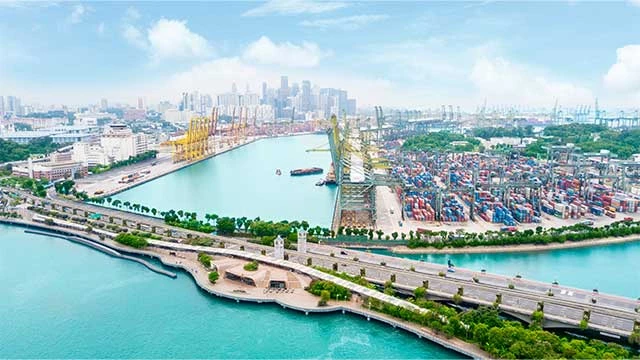
- Overcapacity Concerns: Shipowners have significantly increased orders for container vessels leading to a record order book of 8.4 million TEUs as of November 2024. We should expect a result of overcapacity which could depress freight rates and strain profitability. This could be a double-edged sword where shippers may enjoy lower freight rates but must deal with operational challenges brought by reduced profitability of the carriers in coping with the situation.
Impact on Freight Rates
- Freight rates in Asia have experienced significant fluctuations in 2024. In the weeks leading up to the Lunar New Year, we have seen businesses expediting production and shipments before the factories are shut down for the festive. The surge in demand for shipping also leads to heightened competition for available cargo space. As a result, freight rates have risen during this period.
- After the holidays, productions and businesses will gradually return to operations. We can expect some lead time for production and shipping activities to resume to normal levels, leading to backlogs and continued pressure on freight rates right after the holidays.
- Another major world event will be the inauguration of President Trump which is anticipated that several variables could impact the Asian shipping industry in the current quarter. The combination effect of new tariffs, currency fluctuations, and potential port disruptions may lead to increased volatility in freight rates across Asia.
Outlook
- In summary, the Lunar New Year will significantly affect freight rates in Asia, mainly through pre-holiday demand surges leading to increased freight rates, operational slowdowns during this time before normalcy returns post-holiday. Proactive planning and collaboration with Bertling are encouraged to mitigate these impacts to the supply chain.
- Certain routes may continue to experience rate fluctuations due to geopolitical factors and shifting trade patterns. Overall market is expected to stabilize as carriers adjust capacity and operational strategies.
- Bertling and our clients are encouraged to closely monitor the developments in the US trade policy and currency markets to maneuver potential challenges effectively in the shipping industry.
Key Trends - North America
- In a joint statement, the International Longshoremen's Association (ILA) and the United States Maritime Alliance (USMX) described their new contract as a “win-win.” The tentative deal on a new six-year contract addresses the contentious issue of automation, which had been one of the main sticking points in the negotiations.
- The incoming Trump administration will direct federal agencies to alleviate persistent U.S. trade deficits and confront what he calls unfair trade and currency policies by other nations. He is expected to focus on China, Canada and Mexico, directing agencies to assess compliance with the USMCA and a 2020 trade deal with China.
- The U.S. Trade Representative has issued findings in the Section 301 investigation of the People’s Republic of China’s (PRC) targeting the maritime, logistics, and shipbuilding sectors for dominance, concluding that the PRC’s targeted dominance in these sectors is unreasonable and burdens or restricts U.S. commerce, and is therefore “actionable” under Section 301. This paves the way for possible fees on Chinese built vessels calling US ports.
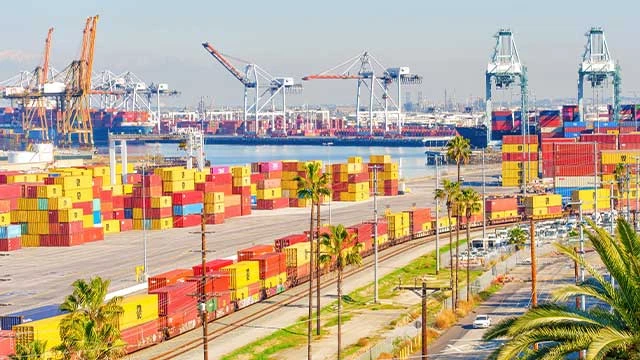
Main Reasons for Bottlenecks
- As of 22 January, West Coast rate = USD 5,175 per FEU, East Coast rate = USD 6,542 per FEU.
- Tariffs on countries like China will impact trade.
- Chinese New Year Holidays will cause delays.
Impact on Freight Rates
- The benchmark Shanghai Containerized Freight Index (SCFI) was down 7% on 17 January over the previous week falling 159 points to 2130.81 points. A lesser drop was reported by Drewry on its World Container Index (WCI) on 16 January with a 3% decrease to $3,855 per FEU. Freight rates from Shanghai to Los Angeles decreased 5% to $5,228 per FEU, while rates from Shanghai to New York fell 4% to $6,825 per FEU.
Outlook
- "Looking ahead, it is likely that spot rate growth will now soften on trades into the US from the Far East, suggesting a brighter outlook for shippers negotiating new long term contracts." (Xeneta)
Key Trends - South America
The Brazilian Minister of Ports and Airports, in a ministerial meeting with President Lula on 20 January, presented the expansion projects for the ports over the next 2 years, including the auction for the concession of the Santos 10 Container Terminal (Tecon), whose investment value is expected to be approximately USD 580M, as well as the concession of the access channel to the Port of Paranagua for approximately USD 166M. These are measures that ensure greater efficiency in Brazilian port activity.
Main Reasons for Bottlenecks
- On 20 January 2025, the traffic restriction for the transportation of special cargo (overweight and oversize cargo) on the access roads to the Port of Santos came to an end. It is expected to take around 15 days for the flow to return to normal with the departure of special import cargo from the Port.
- Rains in southern Brazil have increased delays and congestion at ports such as Itapoa, Navegantes and Rio Grande in Brazil, leading to port omissions.
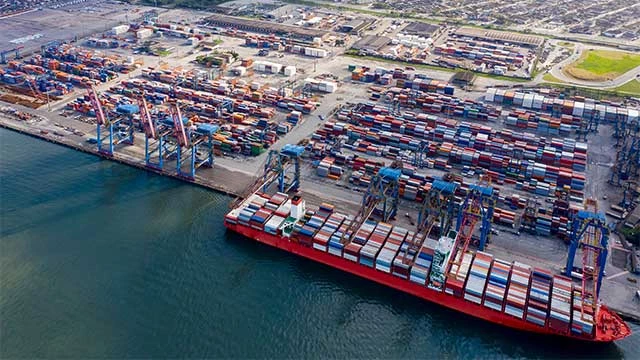
Impact on Freight Rates
- Maersk is revising the Peak Season Surcharge (PSS) for Far East Asia (excl. Taiwan China) to East Coast South America for all Dry containers with effective from 20 January: Destination: Argentina, Brazil, Paraguay, Uruguay: 20 DRY: USD 250; 40 DRY: USD 300
Outlook
- We expect a stable demand and stable rate levels, also in the coming weeks.
Key Trends - Middle East
- 4Q 2024 saw lower volumes being traded and in the last two weeks of New Year the volumes have been stagnant.
- This has prompted container liners to adjust the freight rates downwards to retain the existing business and thereby hurting margins. This trend is expected to continue into Q1 2025
- Many carriers have been struggling to match excess available supply with current demand, forcing them to keep adjusting rates downwards to gain as many bookings as possible.
- Average rates from Nhava Sheva or Mundra to North America have weakened, to about USD 1,500 per FEU, a precipitous drop from the USD 11,000 shippers had to briefly contend with six months ago.
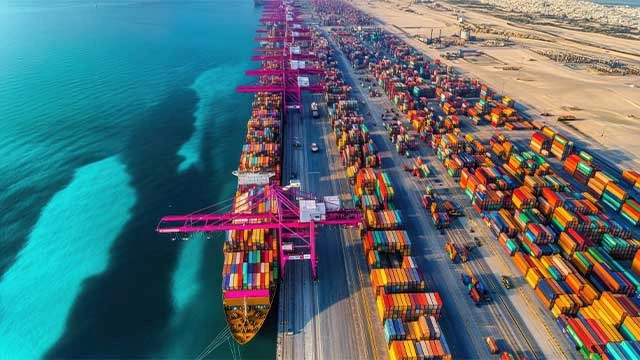
Main Reasons for Bottlenecks
- Port Congestion continues in Dammam due to cargo for Jeddah (West Coast) being routed to Dammam Sea Port on East Coast as ships continue to circumnavigate via COGH to discharge containers in Dammam Sea Port for pan KSA.
- Fewer availability of trucks to pull out import containers from Port due to deployment of trucks at constructions Project Sites across Saudi Arabia.
- Continued congestion at Container Yard/s outside Dammam Port for returning empty containers, resulting in lower productivity/turnaround.
- Jebel Ali Port is also congested due to continued heavy transhipment of Jeddah bound containers and change in weather conditions.
- This has resulted in with slow turnaround of trucks which are either caught up in traffic inside the terminal or awaiting appointment tokens to pull/deliver containers.
Impact on Freight Rates
- There has been a downward revision of freight rates since November, which has continued in 2025.
- This is mainly due to excess capacity and drop in import volumes.
- Even though there is downward slide, liners do not expect freight rates to return to pre-pandemic levels.
Outlook
- Continued significant uncertainties in container shipping sector.
- Cautiously optimistic outlook on exports, specially out of India and major carriers are tweaking their routes into USA East Coast to achieve a quicker transit.
- Potential US policy shifts expected to create mid-term uncertainty.
- Majority of the New Builds are replacements, hence limiting available capacity.
- The Red Sea crisis expected to continue into third quarter even though a ceasefire agreement has been agreed.
- Port and hinterland infrastructure are the bottlenecks and will continue to be so.
- With the announced changes in “Alliances”, service disruptions are anticipated during the transition.
- Weather-related disruptions add to uncertainties.
Key Trends - South Africa
- An average of ~8 814 TEUs were handled per day in South African Ports, with ~10 720 TEUs projected for next week.
- Rail cargo handled out of Durban was reported at 2,360 containers, up ↑4% from 2nd week of January.
- Cross-border queue: ↓2,3 hrs; transit: ↓1,8 hrs; SA borders: 7,9 hrs (↓33%); SADC: 4,0 hrs (↓29%).
Main Reasons for Bottlenecks
- Strong winds ensured operational delays in Cape Town this month.
- Rainy weather and equipment breakdowns ensured operational disruptions in Durban.
- Adverse weather conditions represented the main operational constraint in the Eastern Cape.
- Minimal delays were reported at the Port of Richards Bay.
- The median border crossing times at South African borders decreased by almost four hours, averaging ~7,9 hrs (↓33%, w/w) for the week.
- In contrast, the greater SADC region (excluding South African controlled) decreased by an hour and a half – averaging ~4,0 hrs (↓29%, w/w)
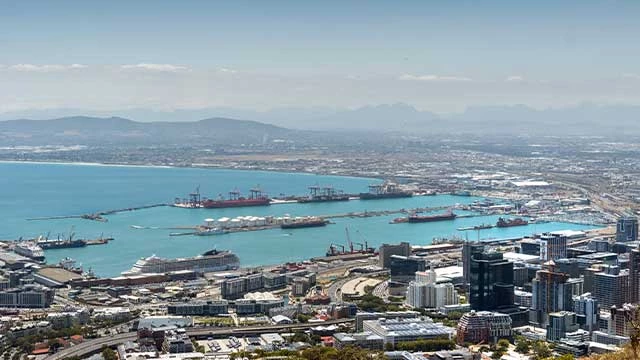
- Mozambique protests and Lebombo update: The current state of truck movement through the Lebombo border post is calm and stable, with land border operations fully operational. Nevertheless, operations have been suspended intermittently in the last few weeks. However, there was a noticeable decrease in the number of trucks entering and exiting KM4 at the start of the week, showing reductions of nearly ↓50%.
- This decline is attributed to disruptions caused by a nationwide strike in Mozambique, which impacted overall truck volumes, reducing them by approximately ↓55%.
Impact on Freight Rates
- Disruptions caused by the above mentioned factors will impact rate levels, schedules and space
- We will keep monitoring the situation closely and keep our customers closely informed.
Outlook
- We expect the above mentioned disruptions continue in the coming days and weeks.
- We keep a close eye on the unrests in DR Congo and Mozambique, which are a great concern.
Customer advice
Considering the ever-changing market conditions and forces, please:
- Think ahead and book well in advance. Try to plan for 6 months ++.
- Consider that the market can change significantly. Further disruptions can happen anytime.
- Identify contract options that enable flexibility and resilience for your business.
However, it is our job at Bertling to keep global supply moving and do all we can and apply our knowledge, network and expertise to protect our clients’ while taking the latest market developments into account. We are there to find the best solutions to ensure cargo flows.




